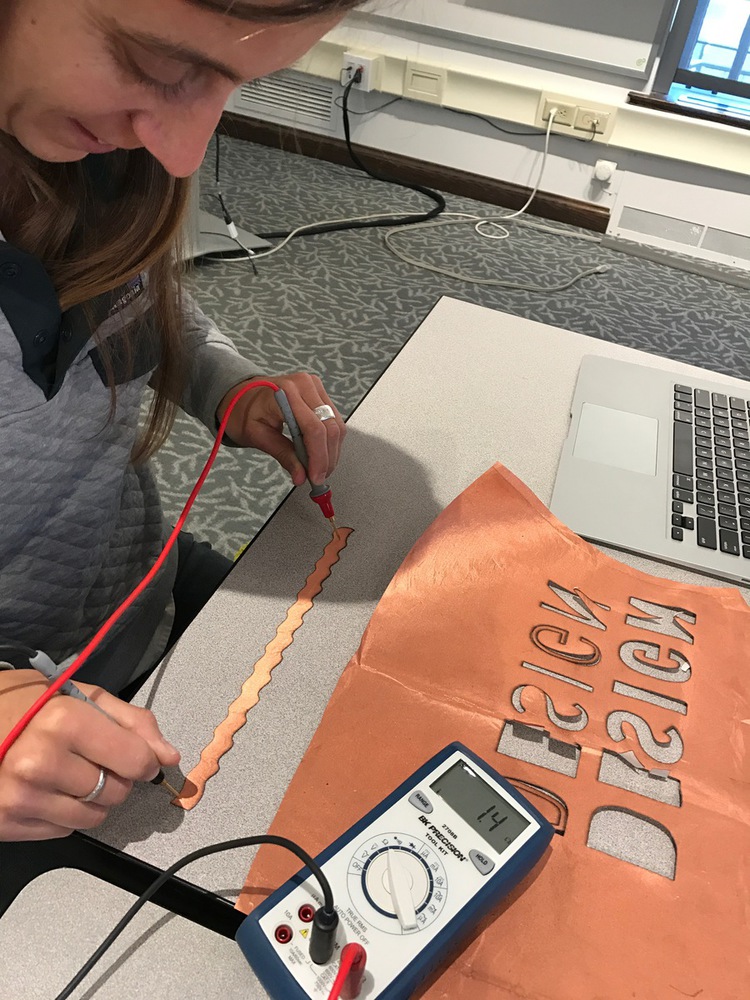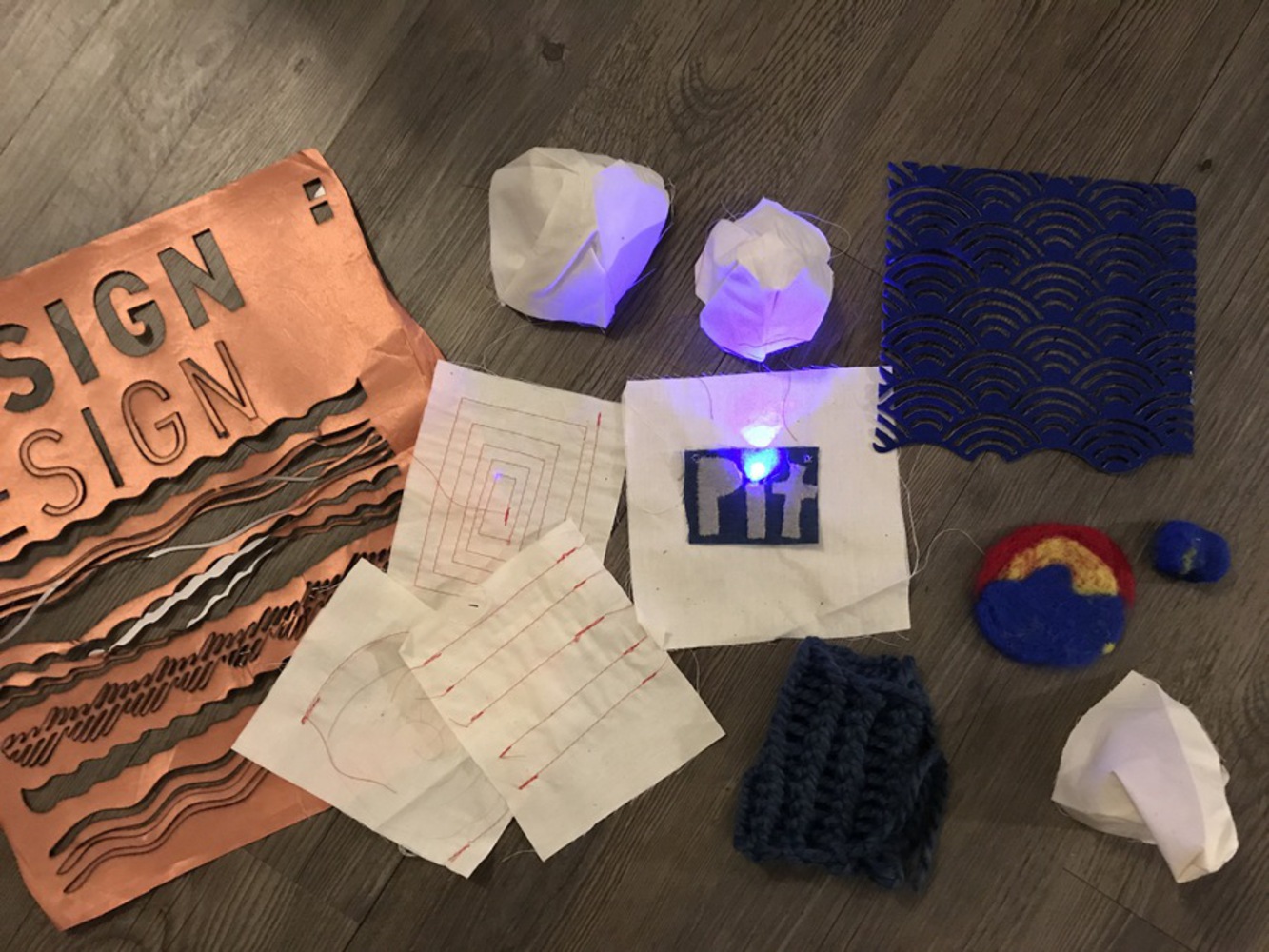Intention
During the class I was really inspired by our section on conductive materials, the work of Project Jaquard, and Laura Devendof. As a grad student in design, I am particularly interested in exploring non-screen based interactions and ways of interacting with technology that feel more organic than clicking on a screen. I am also an avid surfer, often mesmerized by the rhythms of waves, and seeing how thermochromatic materials appear to organically come to life evoked the movement of waves for me. This project proposal is thus an exploration of how we might create a basic animation of wave movement using the properties of conductive fabrics & inks.
This project proposal is intended to be the basis of larger project I am working on for my Interaction Design Lab. The final product will include an:
- Illustration screen printed onto fabric with thermochromatic paint;
- Conductive fabric or thread woven through the illustration;
- An Arduino-powered proximity sensor that triggers a circuit to turn on/activate the thermocratic paint
The final product should look like a screen print of a wave scene that is hung on the fall that appears flat from far away. When a person approaches the print, the ink will "illuminate" and make it look like the wave is moving on the page. The word "design" will be incorporated, as part of a requirement for my IxD lab. The typeface selection will be based on letter shapes that compliment the flow of electricity.
Ultimately, I'd like to use this project as a wave of understanding how these sorts of fabrics and interactions could be incorporated into wearables or embedded into an everyday environment.



